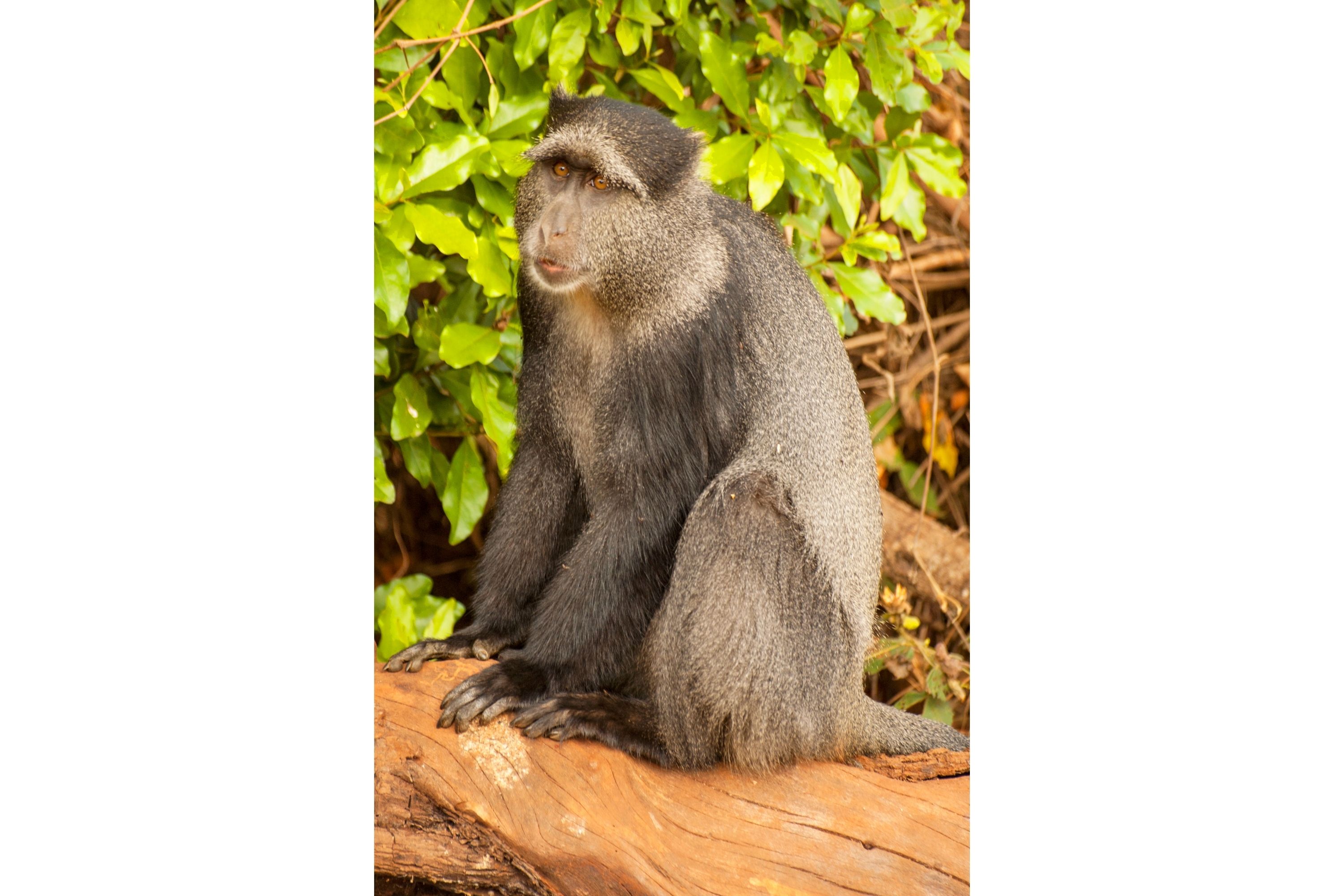Blue monkey
(Cercopithecus mitis)

Description
The blue monkey or diademed monkey (Cercopithecus mitis) is a species of Old World monkey native to Central and East Africa, ranging from the upper Congo River basin east to the East African Rift and south to northern Angola and Zambia. It sometimes includes Sykes', silver, and golden monkeys as subspecies. Despite its name, the blue monkey is not noticeably blue; it has little hair on its face, and this does sometimes give a blue appearance, but it never has the vivid blue appearance of a mandrill, for example. It is mainly olive or grey apart from the face (which is dark with a pale or yellowish patch on the forehead - the "diadem" from which the species derives its common name), the blackish cap, feet, and front legs, and the mantle, which is brown, olive, or grey depending on the subspecies. Typical sizes range from 50 to 65 cm in length, (not including the tail, which is almost as long as the rest of the animal), with females weighing a little over 4 kg and males up to 8 kg. The blue monkey is found in evergreen forests and montane bamboo forests, and lives largely in the forest canopy, coming to the ground infrequently. It is very dependent on humid, shady areas with plenty of water. It eats mainly fruit and leaves, but will take some slower-moving invertebrates. It prefers to live in tall trees, which provide both food and shelter, and is, therefore, like almost all guenons, suffering from the loss of its natural habitat. Where pine plantations replace natural forest, the monkey may be treated as a threat by foresters, since it sometimes strips bark from exotic trees in a search for food or moisture.It is also hunted for bushmeat. Cercopithecus mitis joins with the C. ascanius (red-tailed monkey) for extra protection.Its interactions with red-tailed monkeys include interspecies grooming.Their social system is mainly female because the males leave once they are mature. The males have little to no interaction with the young. C. mitis is very territorial, so the young males must leave quickly to help themselves become more successful. They challenge the dominant male of another family. If they defeat the dominant male, they take over the leadership of that family, and this offers a place to live, socialization, and food supplies for the young males."C. mitis is said to be nomadic.
Taxonomic tree:







